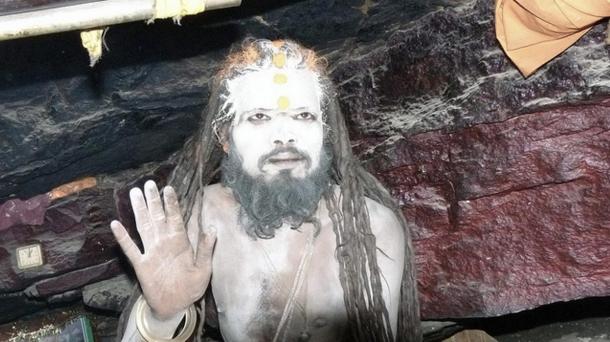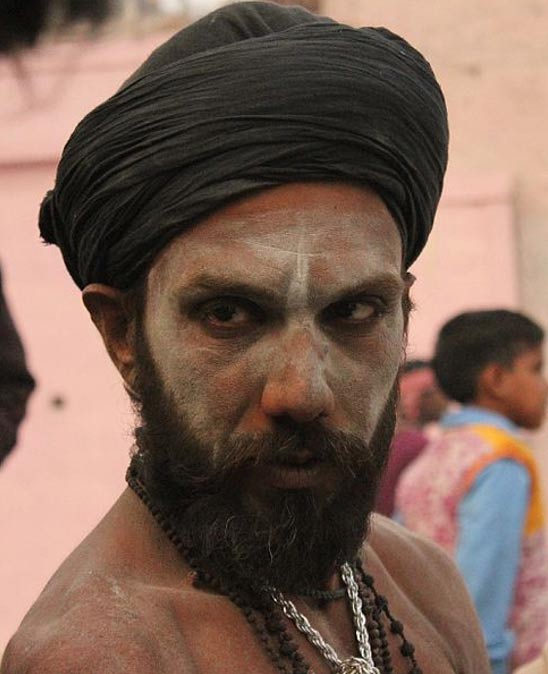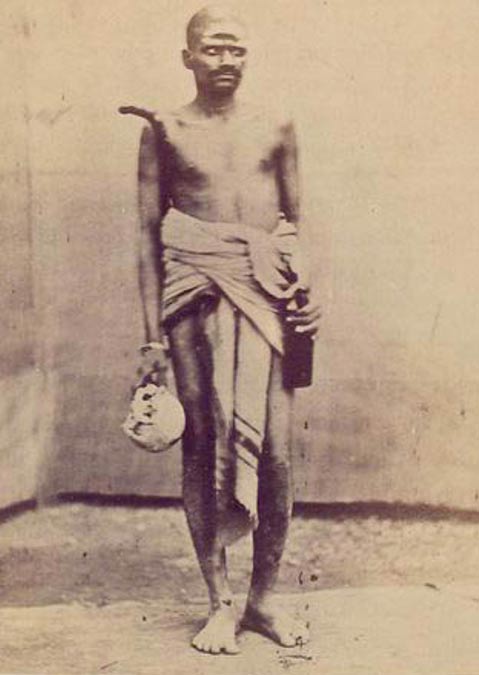
The Aghori and Their Unorthodox Path to Enlightenment
The Aghori are followers of a Hindu sect believed to be 1000 years old. These ascetics are often regarded as sadhus (Sanskrit for ‘good/holy man’), and have devoted their entire lives to the achievement of moksha (meaning ‘liberation’). Unlike other sadhus, however, the Aghori follow an unconventional and radical path towards enlightenment.
These practices are considered as contradictory to orthodox Hinduism, and the Aghori have earned the reputation as being the most feared sadhus in India. The Aghori are also said to be highly respected. So, who are the Aghori, and what are the practices that have earned them their much feared reputation?
An Introduction to Aghori Beliefs
The present form of the Aghori sect may be traced back to Baba Keenaram (Kinaram), a 17th century ascetic who they say lived until the age of 170. After his death, Baba Keenaram was buried in the holy city of Varanasi, and the Keenaram temple that was built there is considered by the Aghori as a most sacred site.
The Aghori worship Shiva or Mahakala, the destroyer, and Shakti or Kali, the goddess of death. The Aghori are usually found residing near cremation sites, most famously, in Varanasi. Nevertheless, they can also be found in other areas which are much more remote, including the cold caves of the Himalayas, the dense jungles of Bengal, and the hot deserts of Gujarat.

An Aghori in a cave near Badrinath, India. (CC BY 2.0)
According to Aghori belief, liberation may be achieved by embracing practices which are considered taboo by orthodox Hinduism. Furthermore, they believe that when these practices are done properly, faster spiritual progress can be achieved. The way of the Aghori is certainly not for the faint of heart, as those who fail to do their practices appropriately risk binding themselves down more tightly to the wheel of existence.
Aghori Ritual Practices
One of the most famous practices of the Aghori is cannibalism. It must be noted that the Aghori do not deliberately kill people for their flesh. Instead, it is the flesh of corpses brought to the cremation grounds that they consume. This human flesh is often eaten raw, though at times it is roasted over an open fire.

Overlooking a section of the holy Manikarnika ghat cremation grounds at Varanasi, India. (rohit /Adobe Stock)
The Aghori believe that distinctions are merely delusions, and are obstacles in the path of one’s spiritual development. Thus, they see no difference between good and evil, nor do they see a difference between human and animal flesh. The consumption of the flesh of corpses, therefore, is an affirmation of the Aghori’s belief system. Apart from human flesh, the Aghori are also known to drink urine and eat feces. These practices supposedly help to kill the ego and derail the human perception of beauty.
- Manikarnika Ghat and the Role of Cremation in Traditional Indian Funerary Rites
- Skull Cups and Chewed Bones: Cannibalism was Ritual Behavior during Stone Age say Researchers
- Human bones show evidence that Aztecs practiced ritual cannibalism
- The Hindu sacred texts about human origins
Another Aghori practice is the shunning of clothes. Aghori often move around with nothing but a loincloth, and at times, in the nude. This act is meant to allow the Aghori to overcome their feelings of shame, and is also aimed at the renunciation of the material world and attachment to material objects. Additionally, the Aghori smear themselves with ash from human cremated remains. The use of human ashes is meant as an imitation of Shiva, and is believed to protect the Aghori from diseases.

An Aghori with his face painted with human ashes in Varanasi, India. (CC BY SA 3.0)
The Skull: The Sign of the Aghori
In addition to human ashes, the Aghori also use other human remains, most notably the human skull. The skull, or ‘kapala’, is the real sign of the Aghori, and once initiated, an Aghori will go in search of this object. The skull is then used as a bowl for all the Aghori consume. They also share this bowl with animals such as dogs and cows.
According to one myth, Shiva once decapitated one of Brahma’s heads, and was forced to roam about the outskirts of society while carrying the head. Therefore, seeking to emulate Shiva, the Aghori also carry human skulls with them.
It has also been suggested that the Aghori keep human skulls due to the belief that after death, the life force of the deceased clings in the top of the skull. Furthermore, the Aghori believe that with the use of certain mantras and offerings (especially alcohol), they are able to summon the deceased’s spirit and gain control over it.

An Aghori carrying a skull and alcohol. (circa 1875) (Public Domain)
The practices of the Aghori are indeed highly unorthodox and extreme, and would almost certainly be rejected by the majority of Hindus. Though the Aghori themselves perceive their actions as a faster means to achieve moksha, the necessary rituals to achieve their goal are far too radical for most people. Needless to say, this is not a path that many would want to, or would be able to, follow.
Top Image: Two images of Aghori. Source: CC BY NC ND 2.0 and CC BY ND 2.0
By: Ḏḥwty
Updated on July 16, 2021.
References
Bhavika, 2015. An Aghori’s Path to Enlightenment. [Online]
Available at: http://fractalenlightenment.com/13606/culture/an-aghoris-path-to-enlightenment
'Enwil', M. S., 2012. Lessons From Aghori Baba (Why It’s Dangerous To Know Your Future). [Online]
Available at: http://enwil.com/aghori-baba/
Gordon, S., 2015. The cannibal monks of Varanasi: Indian tribe feasts on human flesh, drink from skulls and live among the dead. [Online]
Available at: http://www.dailymail.co.uk/travel/travel_news/article-2975435/Incredible-images-life-India-s-cannibal-Aghori-tribe.html
haridwarcity.in, 20014. And I met an aghori. [Online]
Available at: http://haridwarcity.in/haridwar-land-of-aghoris/
Thakur, P., 2014. Bizarre: Sex rituals of Aghori Sadhus. [Online]
Available at: http://www.speakingtree.in/allslides/sex-rituals-of-aghori-sadhus
















Comments
Very interesting and enlightening!
What looks like an arm coming out of his chest is probably some kind of rod that they seem to have and use. I found a picture to show this here: http://i.telegraph.co.uk/multimedia/archive/03216/varanasi-cannibal-_321...
I'd like to know why it looks like there's an arm coming out of his chest?
Very interesting. I was aware of this splice of Hinduism, but this is has some nice details.